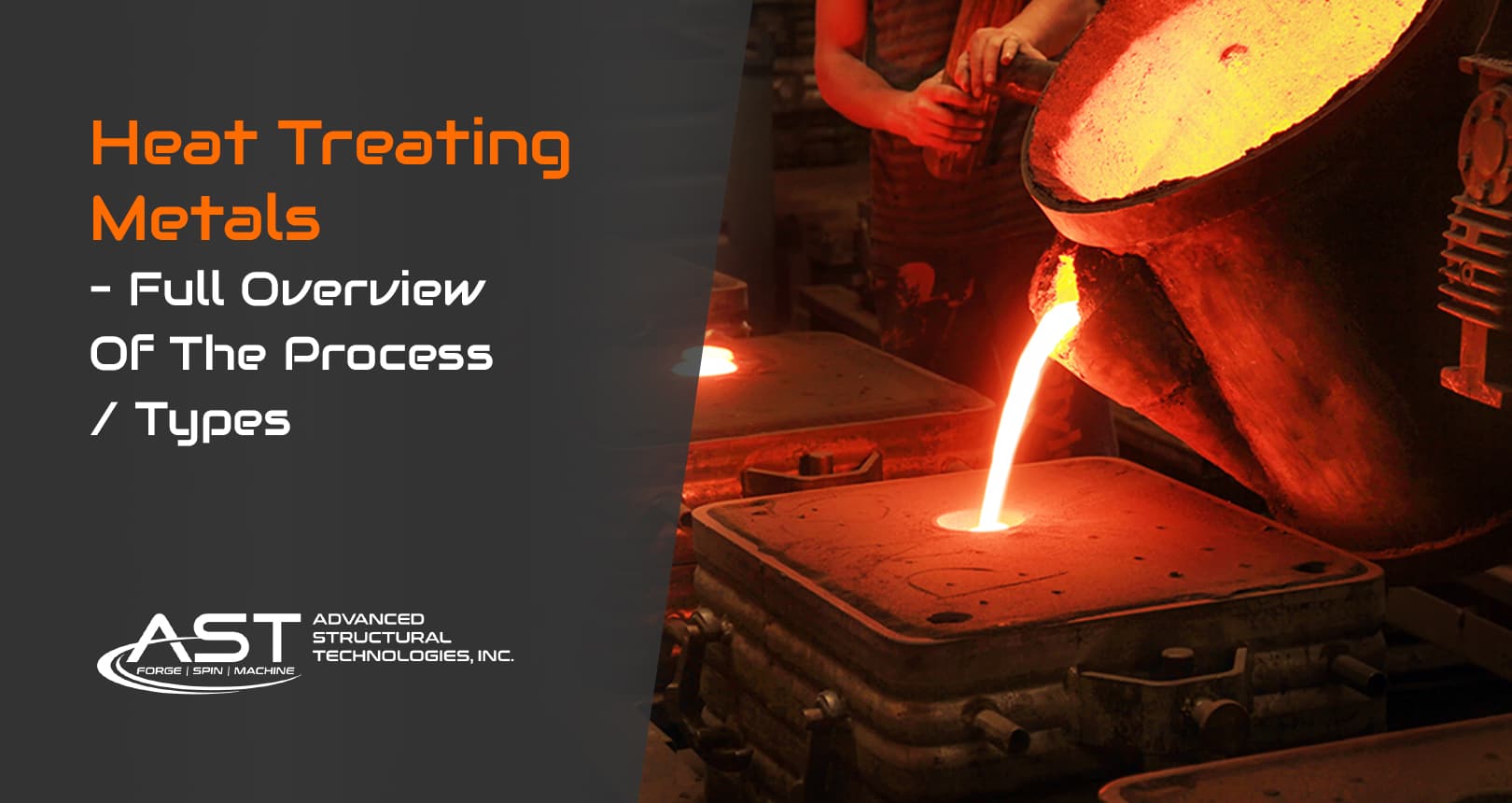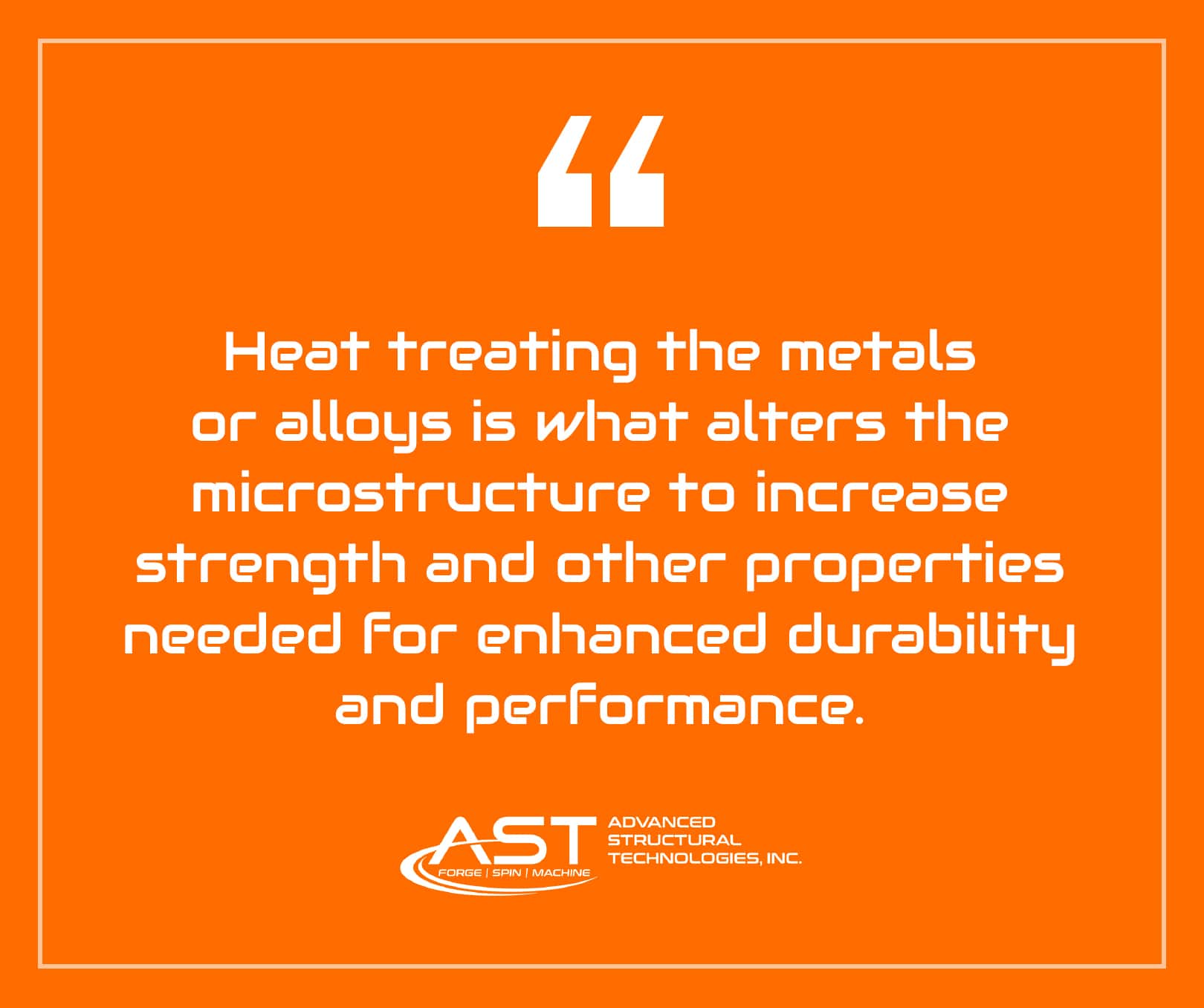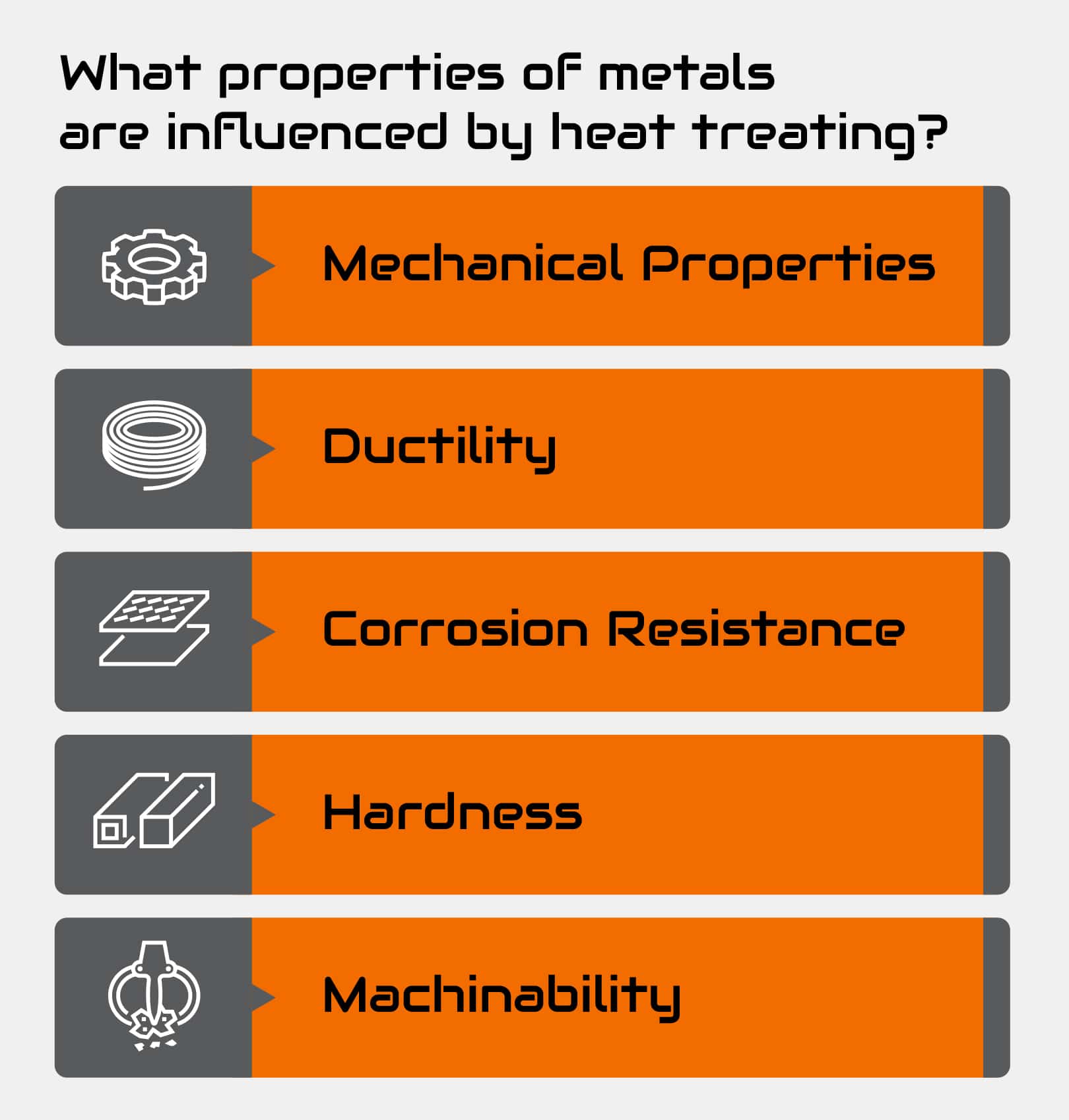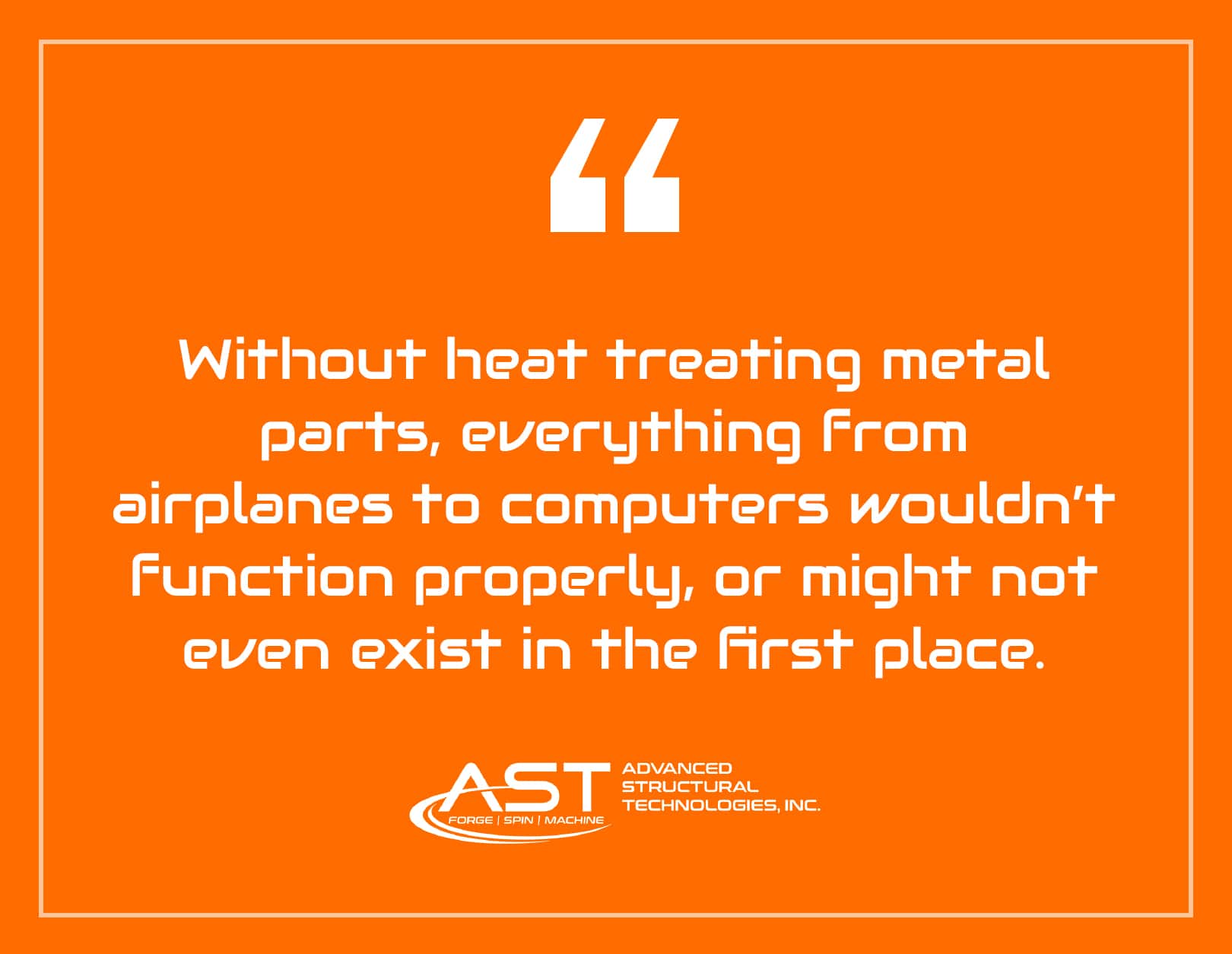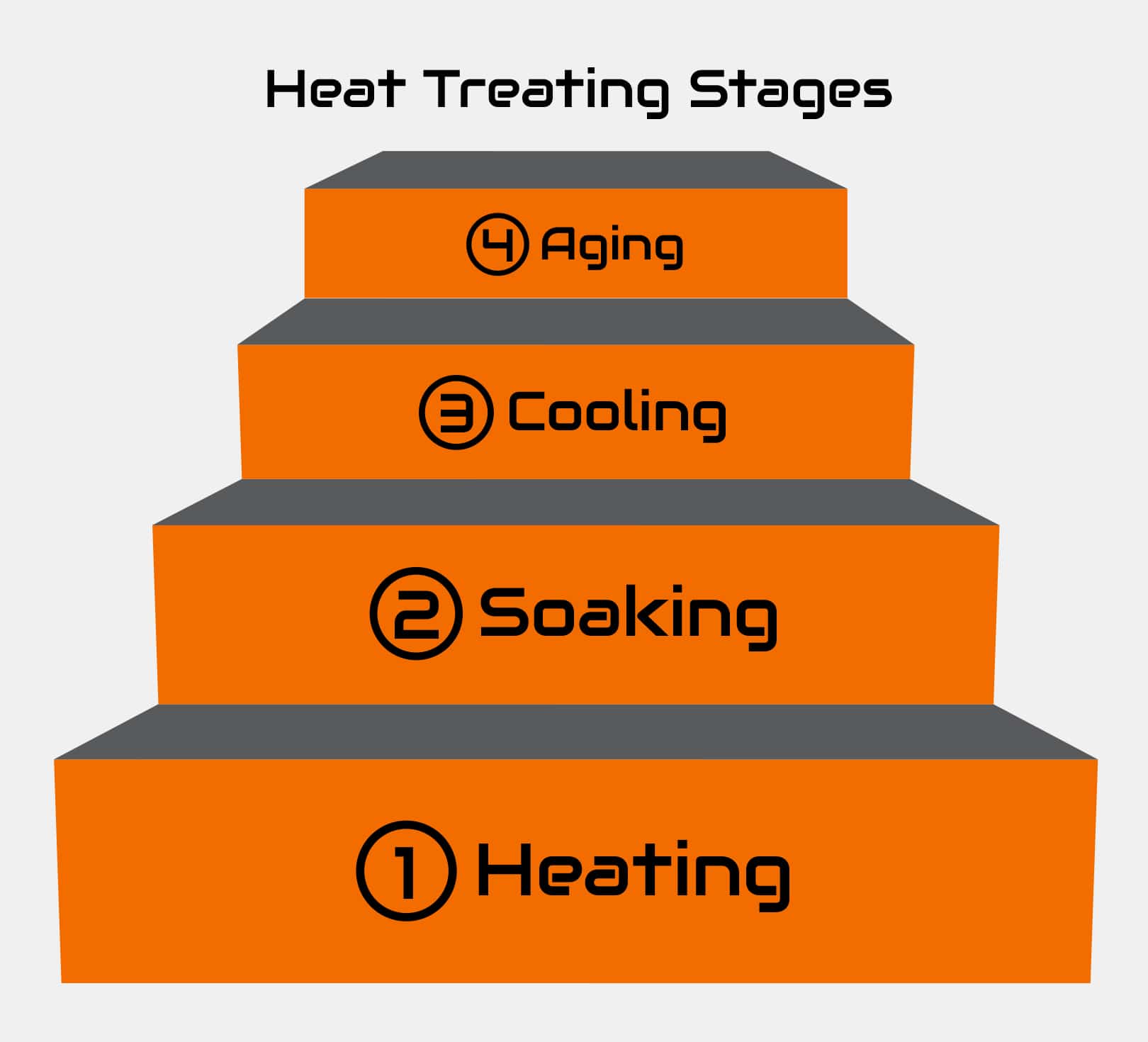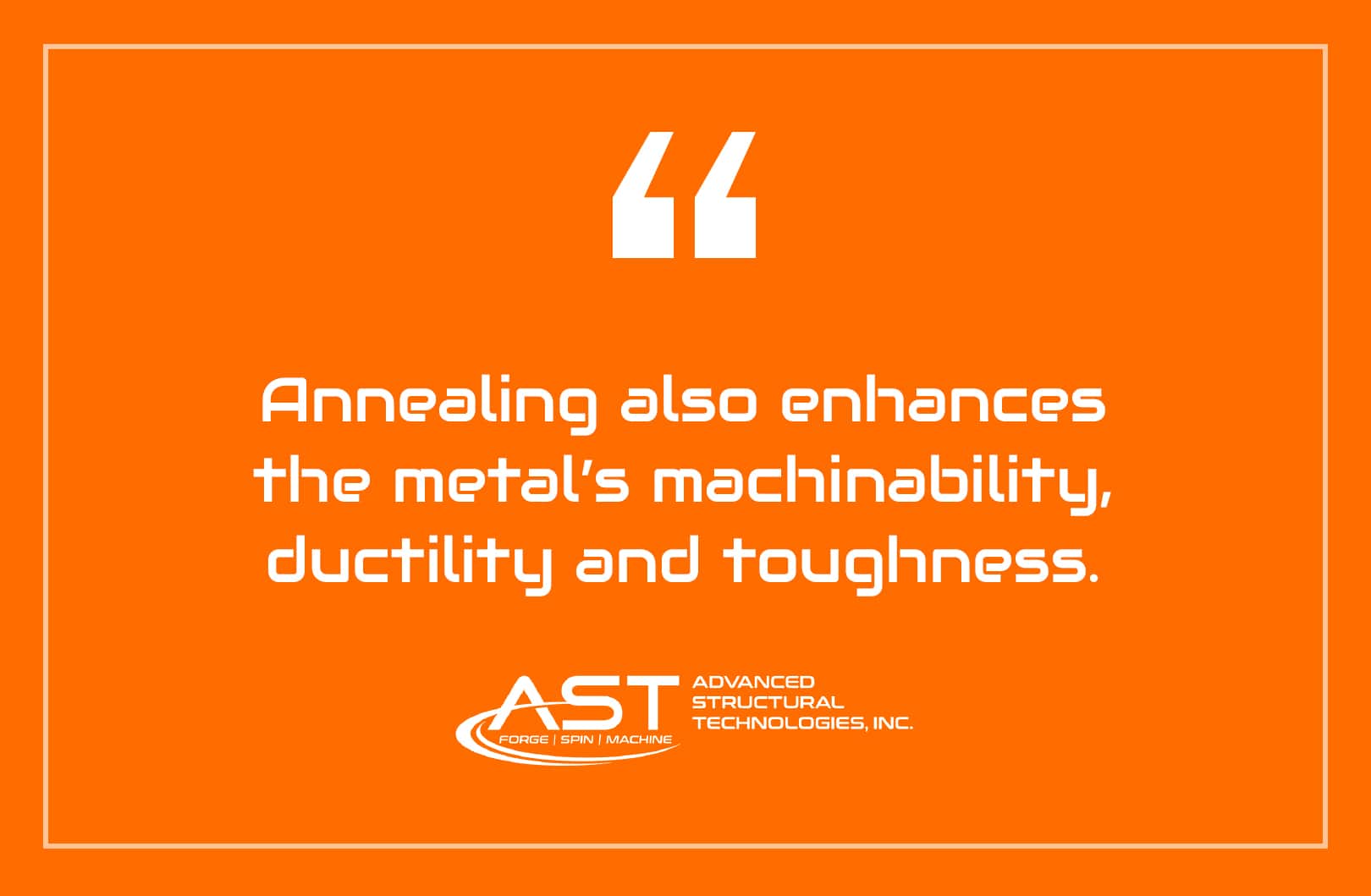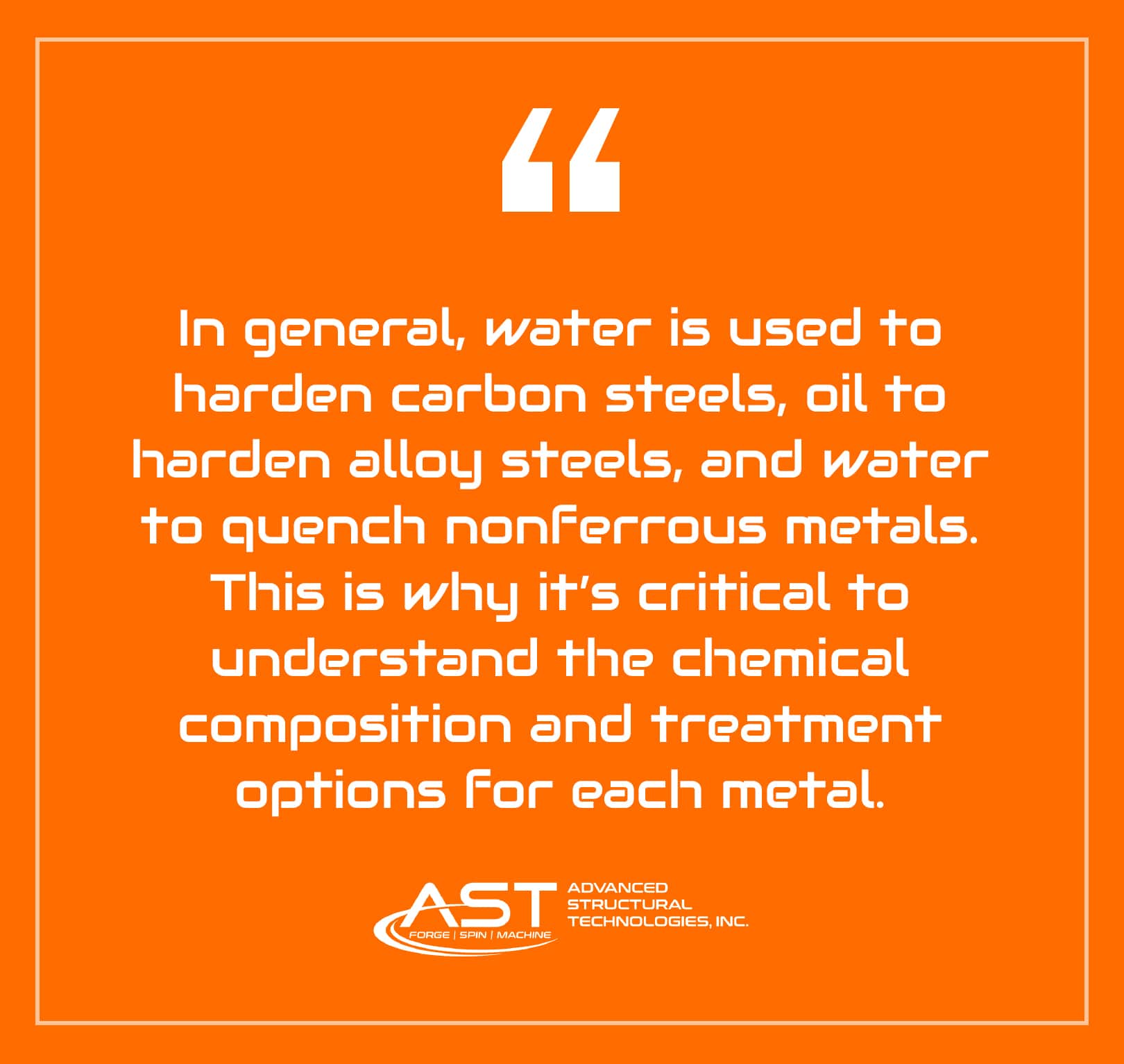Heat Treating Metals – Full Overview Of The Process / Types
Metal working would not exist today without different methods of heat treating. In fact, we could go so far as to say that without heat treating, our modern lives would be entirely different! A crucial process to manufacturing metal and alloy parts, heat treating offers many benefits long term as well. From increased strength and ductility, to increased resistance to corrosion and more, heat treating offers safety, durability, and cost efficiency for companies who use any kind of metal part, whether that’s in the aerospace, alternative energy, or even forged wheel industries.
Heat treating is important for manufacturing and for long term efficiency of any metal work. It’s important to understand how it plays a role in the manufacturing process when you are looking to source metal parts. This article is your ultimate guide on heat treating and is meant to help be a resource to explain the different types of methods and the benefits they offer.
Table of Contents
What Is Heat Treatment?
Heat treating is an essential part of the manufacturing process that ensures the part has the end result to support its application. Without it, metal parts we typically take for granted because of their strength and durability would not be able to withstand the application they’re created for, whether that’s:
- A part for forged racing wheels,
- Engine nozzles, combustion chambers or COPV’s used in aerospace applications,
- High pressure vessels used in transporting hydrogen,
- Or any other number of applications.
Whatever the end application, you are counting on the part to perform safely and effectively.
Heat treating the metals or alloys is what alters the microstructure to increase strength and other properties needed for enhanced durability and performance. This is accomplished when the metal or alloy is heated to a specific temperature, without letting it reach its molten, or melting, stage. After which it’s cooled in a controlled way in order to harden the heated material and to select desired mechanical properties.
The process is very controlled and depending on the desired outcome, as well as the type of metal and the structure of the part, you need to know exactly how long to heat and cool it, what medium or liquid to cool it with, and more. When done with exactness, trained metallurgists are able to change the microstructure of the metal and bring out the desired mechanical, chemical, and physical characteristics needed for your end application.
History of heat treating metals
Heat treating metal is likely one of the oldest sciences known to humankind. We’ve been treating metals in order to change their structure to build tools, parts, wheels and more for thousands of years. As early as 6000 BC evidence has shown that humans had learned how to recover metal from their ores, with metals like copper or lead.
In fact, the process of extracting iron totally changed humankind. 1,200 B.C., which archaeologists mark as the beginning of the Iron Age brought a huge change to humanity as metalworking advances allowed for new technology, new parts, and new ways of creating machines and architecture.
Today, metalworking processes are obviously significantly more advanced, but the general processes involved with metalworking remain the same—separating metal from its ores, heating it up to a certain point to be able to work the metal itself and then immediately cooling it afterward.
What properties of metals are influenced by heat treating
Ok, so we’ve mentioned that the microstructure of the metal itself is changed. What are those properties?
Here are a few:
- Mechanical properties like tensile and yield strength can be improved
- Ductility,
- Corrosion Resistance,
- Hardness,
- And Machinability.
Heat treating is a give-and-take when it comes to determining exactly what kinds of properties you want the material to have. One metallurgy company puts it perfectly, “Whatever your desired properties, it’s a given that you’ll never be able to get everything you want. If you harden a metal, you also make it brittle. If you soften a metal, you reduce its strength. While you improve some properties, you worsen others and can make decisions based on the metal’s end-use.”
These are properties that are essential in many applications. For example, tensile strength is the resistance of a material to breaking under tension. This is extremely important in applications where the metal part is exposed to extreme pressure. Whether that’s forged wheels under pressure on the race track, or high pressure vessels transporting potentially explosive gasses. Both applications need to have a high tensile strength.
In other applications, you need high ductility, where the metal is able to be deformed (or transformed) without losing toughness. In other words, you want it to be pliable, not brittle. This is essential in applications where you need some give in the part, without the part breaking.
Corrosion resistance is an obvious one; you don’t want your metal parts to decay. Besides safety concerns, it’s also more cost effective to use parts that will last a long time before having to replace them.
Hardness is also an important factor – and the easiest to measure. For many parts where tensile strength, yield strength or ductility may be the desired characteristics, you’ll find that these features correlate with hardness values. You want hardness in order to increase the load a metal part is able to bear.
Why heat treating metals is good / Benefits of Heat Treating in Both the Short and Long Term
Ok, we’ve just covered some specific properties that are enhanced when metal is heat treated, but besides the obvious (like increased strength), what other benefits does heat treating provide?
First of all, without heat treating metal parts, everything from airplanes to computers wouldn’t function properly, or might not even exist in the first place. The ability to heat treat metal allows us to use metal how we do in today’s modern age. It’s provided us with a means to create structures, machines, and more that otherwise would not be able to withstand the pressure.
And it’s not just steel, aluminum and titanium alloys, as well as bronze and brass, are all strengthened through heat treatment. Many of these metals are used in the production of cars, airplanes, and other products that rely on strong metals not only for performance but for safety as well.
Also, there may be a need for extremely hard metals for some applications, in some cases requiring hard edges. Heat treatment is one of the best ways to get the desired performance while maintaining ductile performance as well.
Additionally, as mentioned in the section above, heat treating helps to prevent corrosion, which reduces the need to replace expensive metal parts later on or as frequently. This causes machines to run more cost effectively and efficiently and prevents problems.
Another benefit is that it can also enhance the electrical and magnetic properties of the metal, potentially improving the compatibility of the metals part with other materials.
Those application benefits are great for the buyer or consumer of heat treated products, but heat treating also benefits the manufacturer. It helps to relieve internal stresses, making the metal easier to weld and machine.
To sum up, the benefits of heat treatment of metals include:
- Increased strength and ductility
- Increased resistance to corrosion
- Increased malleability and workability during manufacturing (relieving the metal’s internal stresses, if any)
- Can improve the electrical and magnetic properties of a metal.
Heat Treatment Processes
Heat treating actually undergoes three processes, from heating the material, to “soaking” it, to cooling it. Each is an important step in heat treating the metals in order to fully alter the structural composition of the material.
1. Heating stage
This is the first stage of heat treating, where the material is heated to a specific temperature. The goal in this stage is to make sure that the metal heats uniformly. Which means you want to heat the material slowly. Uneven heating results in one section possibly expanding faster than another and you’re left with a distorted or cracked section of the metal.
The heating rate is chosen according to the following factors:
- The heat conductivity of the metal. This determines how fast the metal will heat up. (Metals with high heat conductivity heat faster than those with low conductivity.)
- The history and condition of the material. Tools and parts that have previously been hardened or stressed, require slower heating than tools and parts that haven’t.
- The size and cross-section of the material. Large parts, or even parts with different cross sections should be heated more slowly than small parts. This allows for more even heating, where the inside temperature can reach the same, or close to the same temperature as the surface. Otherwise, there’s a risk of cracking or excessive warping.
2. Soaking stage
The second stage is the soaking stage. This occurs when the specific temperature is reached during the initial heating and the material is held at that temperature for a specific amount of time.
The purpose of maintaining a specific temperature is to ensure that the desired internal structure occurs. The amount of time to keep the material at a specific temperature is called the “soaking period” and depends on the chemical structure of the material, and the mass, and shape (in the case of uneven cross-sections for example).
3. Cooling Stage
The material is then cooled (or quenched), often rapidly, depending on the desired results. The goal of the cooling stage is to bring the metal back down to room temperature. How it’s cooled down affects the end result, including the hardness of the metal.
The metallurgist at this point needs to know the composition of the metal itself and whether a cooling medium, a gas, liquid, solid, or combination needs to be used to quickly cool the part in a way that will achieve the desired effect.
4. Aging Stage
A solution without aging will be ineffective. There will be no mechanical strength or hardness. The aging process MAKES the hardness. Full heat treatment involves heat treating, soaking, cooling and aging.
Methods of heat treatment
1. Tempering
Tempering is a heat treating method to reduce brittleness and to increase strength of the metal. Some materials like iron-based alloys are very hard and therefore very brittle. When tempered, these metals are heated to a temperature lower than the critical point. This reduces brittleness and maintains hardness.
2. Annealing
Annealing is a heat treatment method where a metal such as aluminum, copper, steel, silver, or brass is heated to a specific temperature, held at that temperature for some time to allow transformation to occur, and then air cooled. In other words, the metal is heated beyond the upper critical temperature and then cooled at a slow rate by air, not by liquid or oil.
The purpose of the annealing heat treating method is to soften the metal (decreasing the hardness), as it makes the metal more suitable for cold working and forming. It relieves stresses the metal may have due to prior cold working processes. The end result? Annealing also enhances the metal’s machinability, ductility and toughness.
Annealing may be used before a metal is machined to improve its stability as it makes harder materials less likely to crack or fracture. There are a number of annealing techniques such as re-crystallisation annealing, full annealing, partial annealing and final annealing
3. Carburizing
Carburizing is a form of case hardening, as you’ll see below. In this heat treatment process, the metal is heated in the presence of another material that releases carbon on decomposition. The purpose of increasing the carbon content is to make the outside of the metal part harder than the inside. This increases the metal’s strength, while making it more resistant to abrasions etc. The drawback is that it also decreases the metal’s toughness. This is usually reserved for finished parts.
4. Case hardening
Case hardening is when the outside of the material is hardened while the inside remains soft. During the heat treating process, focusing too much on hardening a metal part in some cases is undesirable. The give-and-take of hardening is that materials can also become brittle. Case hardening is a great solution because it hardens the outside of the metal part, while keeping flexibility as the core of the metal part remains softer.
Case hardening is achieved by first hardening an iron alloy’s surface by first carburizing (as above) and then quickly quenching the part, keeping the center relatively soft.
5. Decarburization
The opposite of carburization, decarburization involves the removal of carbon from the surface of steel, either by applying heat or through the normal aging process of oxidation.
You can achieve decarburization when the surface of steel is depleted of carbon, by heating above the lower critical temperature or by chemical action. Steel forgings are usually decarburized.
6. Nitriding
Metallurgists turn to nitriding when they want to achieve a high hardness on the surface – usually higher than the carburizing method. This increases resistance to wear and tear and improves the fatigue life of the metal.
To achieve nitriding, steel is heated in the presence of ammonia or other nitrogenous material. Essentially, adding nitrogen to the metal surface and producing case hardening without quenching.
7. Quenching
Quenching is part of the cooling process, when you rapidly cool metal in air, oil, water, brine, or another medium. Quenching will usually harden the material as it cools rapidly in the quenching process, but that’s not always the case. There are cases when water quenching is actually used to anneal copper. Additionally, metallurgists need to understand which metals can be quenched; as when done incorrectly, quenching can warp or crack some metals.
For rapid cooling, water or brine is generally preferred, where oil is usually suggested for slow cooling.
Usually quenching is associated with hardening because most metals that are hardened are cooled rapidly with quenching, but it is not always true that quenching or otherwise rapid cooling results in hardening. Water quenching, for example, is used to anneal copper, and other metals are hardened with slow cooling.
In general, water is used to harden carbon steels, oil to harden alloy steels, and water to quench nonferrous metals. This is why it’s critical to understand the chemical composition and treatment options for each metal. Structural changes occur in this step and are dependent on the type of metal and type of quenching liquid. Brine, water, oil and forced air control the rate of cooling, with air taking the longest to cool.
8. Cold working
Cold working is the process of strengthening metals through plastic deformation. This is made possible through the dislocation movements that are produced within a material’s crystal structure without adding heat. This is a technique commonly used in non-brittle metals that have remarkably elevated melting points.
While technically not a heat treating process, cold working also changes a metal’s structural properties, focusing on strengthening the metal, even though the process is done at room temperature. The biggest difference is that hot working is done at temperatures above the recrystallization temperature of the metal, and cold working is done at temperatures below the recrystallization temperature of the metal.
Used commonly in non-brittle metals with high melting points, cold working deforms the metal at room temperature without fracturing the part.
Drawing is a particular cold working process where the metal is essentially stretched using tensile forces to elongate the metal. As the metal is drawn, it thins until it achieves the desired thickness. Drawing can occur when the metal is reheated after being hardened, soaked, and then finally quenched. Drawing metal elongates the metal, while reducing hardness and increasing toughness.
The drawbacks to cold working are that the stress on metal required for deformation is much higher. Tensile, yield, and fatigue strength are improved, but corrosion resistance, impact strength, and elongation are reduced. Additionally, there is minimal reduction in size, offering the benefit of better dimensional control. Cold working is an ideal method for increasing the hardness of those metals which do not respond to heat treatment.
Learn more about our heat treating processes at AST
Contribute to increased safety and efficiency for your particular application, whether that’s aerospace, alternative energy, or forged wheels applications.
Contact AST now to learn more about our heat treat processes.


